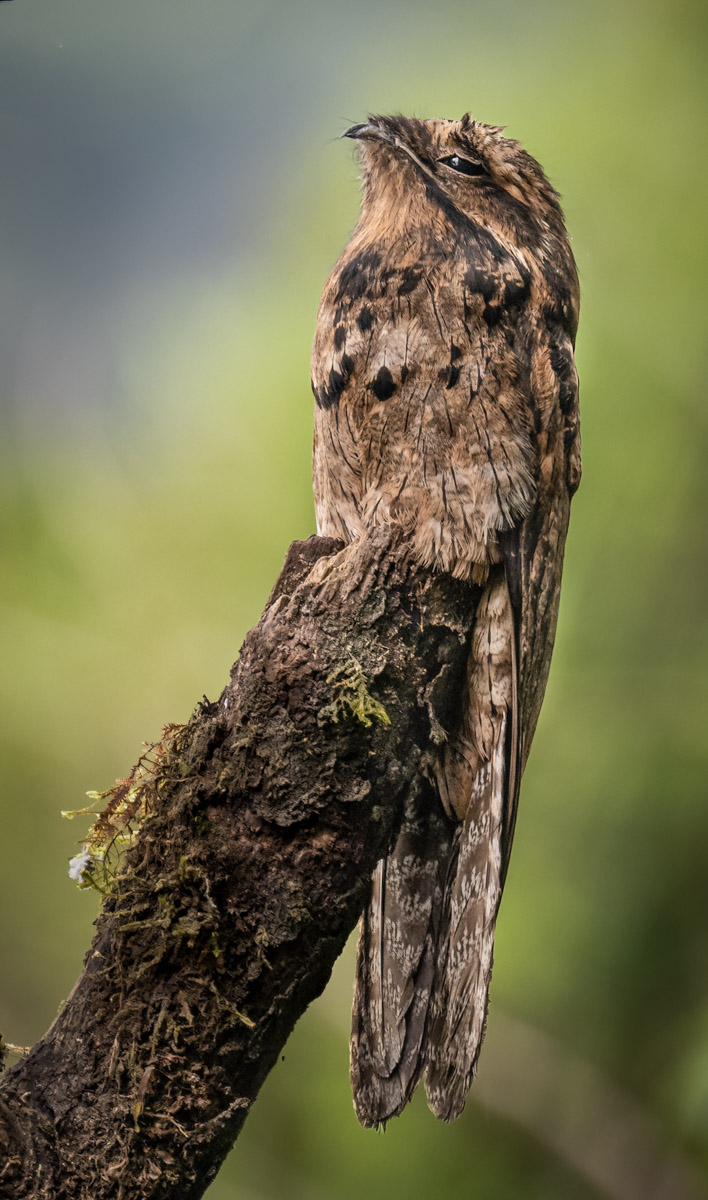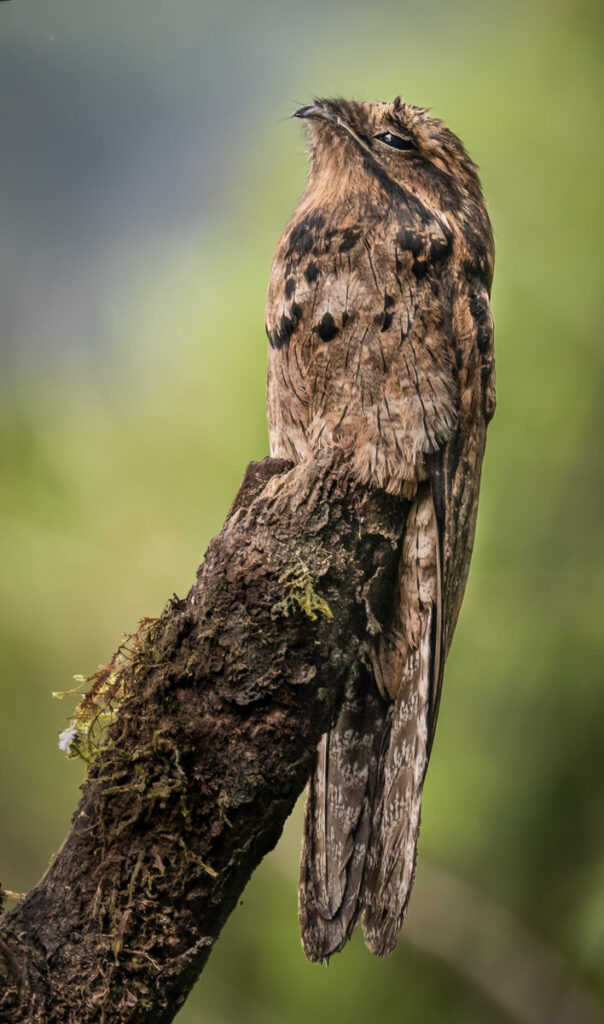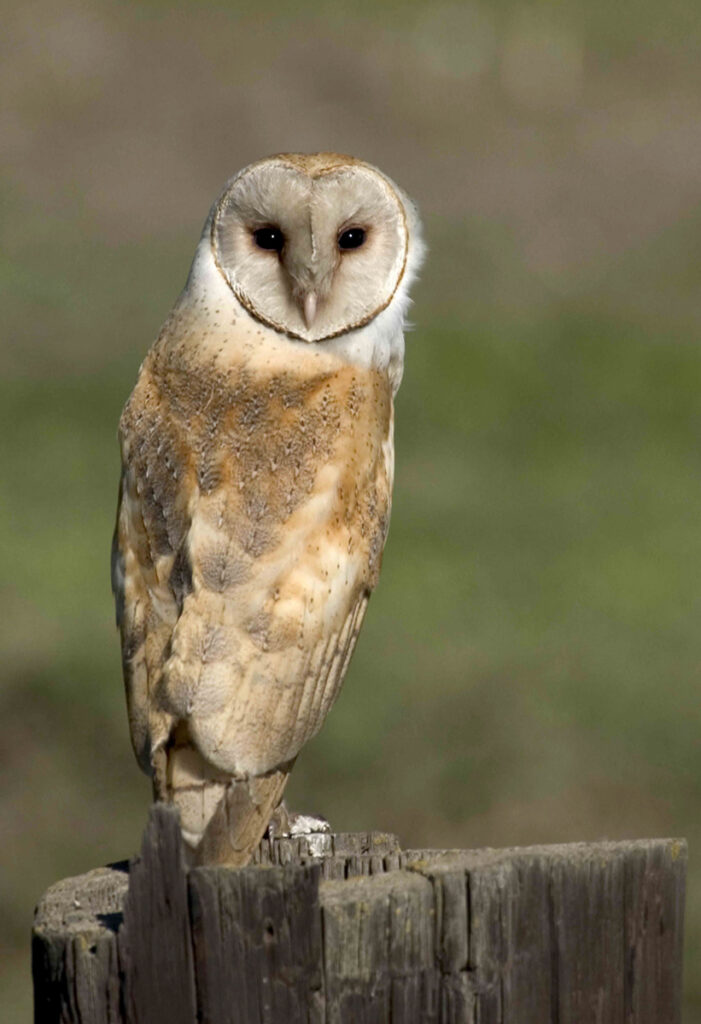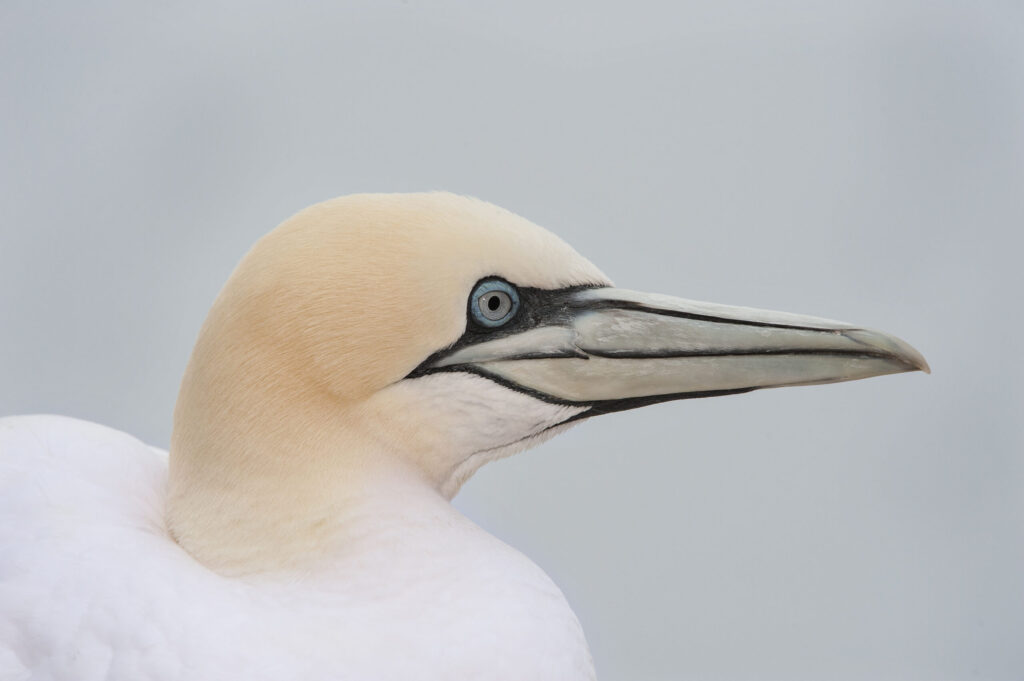
Among the many fascinating adaptations to the diverse environments for our bird species, few features stand out as much as their eyes. Bird’s eyes are so much larger in relation to their head size as they are in us, giving them the ability to discern minuscule detail and movement. The structure is unique among the animal kingdom, and some bird species display this individuality in more ways than first meets the eye.
For a long time it was suspected that birds can see in many more colors than us, and recent research has revealed this to be true. Our eyes share similar components, but where birds excel is in the photoreceptors on the retina, those cells that interpret the incoming light that enters the pupil and is then focused on the retina by the lens. These special cells are called rods and cones and it is these that send electrical signals to our brains to tell us what we are looking at. Rods help us see in dim conditions and cones in brighter ones. A bird’s vision is tetrachromatic, meaning they have four different types of cones as opposed to our three – in addition to the red, green, and blue ones, they also possess cones that detect ultraviolet light. It is now known that each cone also contains a tiny droplet of colored oil; it is this discovery that has scientists convinced the spectrum that a bird sees is far greater than ours.

Birds also use each eye for different tasks – numerous studies have shown that some species as chicks approach their parents using only the left eye; falcons circle their prey in a wide arc rather than looking head on, favoring their right eye only. The research into bird vision is a fascinating field that shows no sign of bringing its discoveries to an end.
Found in Central and South America, potoos are extraordinary looking birds, and one never fails to notice their distinct slitted eyelids. Thin, vertical slits provide these nocturnal birds with several advantages. The slits allow potoos to regulate the amount of light entering their eyes, enhancing their vision in low-light conditions, a perfect adaptation for their primary hunting technique: precision insect-catching. During the day, the slitted eyelids serve as effective camouflage, helping the bird blend in to its habitat as part of the whole cryptic coloring, resembling broken tree branches or knots, safeguarding them from potential predators.

Owls have long been associated with darkness and mystery, and their eyes play a crucial role in their nocturnal hunting prowess. Unlike most birds whose eyes sit on the sides of their heads which allows for a greater field of vision and an ability to see predators approaching from all angles, owls possess large, forward-facing eyes set in their facial discs, allowing them to have exceptional binocular or 3D vision like us. This heightens their depth perception immensely, making their subsequent targeting of prey one of the most precise in nature, even in dim light; and it is this outstanding ability to see in low light that is the most fascinating aspect. Not only can they dilate their huge pupils widely, maximizing the intake of available light, but those aforementioned rods in the retina are also in greater abundance. Owl eyes are also tubular, extending far back into the head, but the large round area at the front means that the distance between owl lenses and their retinas is very small. It is thought that a night-hunting owl circling overhead a 120*53-yard professional football field could spot a mouse by the light of one candle at the opposite end. They also have an additional layer behind their rod-packed retinas, called the tapetum lucidum, which catches and bounces back any light that may have passed through. Some owls like the barn owl have sight that is 100 times more sensitive in low light than ours.

Gannets are seabirds whose unique eye adaptation emphasizes the importance of protection. These plunge-divers hunt for their prey by first locating a school of fish from the air as they hover overheard. They then drop from around 40m above the ocean surface, entering the water at speeds of up to 60mph. The forceful impact and potential damage caused by water pressure is huge, which has led to them developing a specialized structure that prevents vision loss. To mitigate against harm, gannets have evolved tiny, bright blue, and transparent membranes called nictitating membranes, which cover their eyes just before they hit the water. These membranes act as a shield, preventing any potential damage and allowing them to maintain their sharp eyesight as they glide through the water for around 20 seconds. Once they resurface, the membranes retract, and the gannets resume their quest for fish.
Understanding how bird eyes work not only expands our knowledge of their fascinating anatomy, but it also offers insights into the marvels of evolution. By appreciating the intricacy of these adaptations, our understanding of the relationship between form and function in the natural world gains new depths; and we too can see all the more the beauty of the diversity of our feathered friends.


